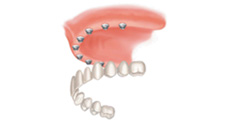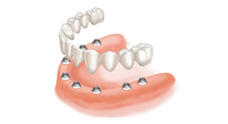The Science
The implant system that we use at Karen Hull Dental Implants is the Straumann ITI Dental Implant System which boasts the best clinical research and is a world market leader. It works in partnership with the International Team for Implantology (ITI), an independent medical and scientific network of international specialists.
Our team of technicians are highly trained in the technical aspects of implantology helping to create predictable outcomes for the long term benefit of the patient.
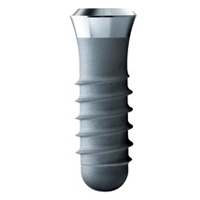
A dental implant is a small screw made of metal which acts as a tooth root. It is made of titanium, a precious metal which has been proven to be particularly biocompatible. The body accepts it as if it were part of it and titanium is used in many medical situations. Its high strength and resistance make it invaluable in its use in dental implants.
Dental implants provide a stable foundation for replacement teeth in the form of crowns, bridges or a denture which look, feel and function like your natural teeth.
Many years of research have created highly sophisticated design forms and materials for use in today's implants that maximise the process called osseointegration. This is a healing process during which bone grows around the tiny threads of the implant and fuses to the implant surface.
Once osseointegration is complete a precision abutment or post can be attached to the implant and a new custom-made crown/denture is fitted onto it.
Long-term studies confirm a success rate of 96% for dental implants. They require regular check-ups and a good standard of oral hygiene. If cared for properly, implants will remain safe and comfortable for many years.
- When teeth are lost through decay, gum inflammation and other diseases
- When an accident leads to the loss of one or more teeth
- When teeth fail to develop or have grown incompletely
All of these situations can benefit from the use of implants to restore the former function and appearance
Replacing a single missing tooth with a dental implant is an ideal solution. The implant acts as a natural tooth in function and appearance. Using an implant avoids the involvement of any other teeth.
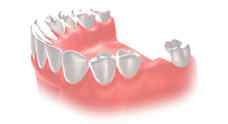
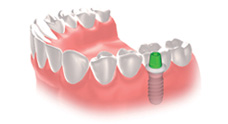
When more than one tooth is missing multiple implants can be used to replace these teeth. However because implants can be linked or splinted together using bridges, it is not always necessary to replace every missing tooth with an individual implant.
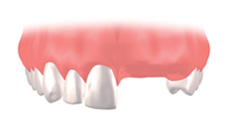
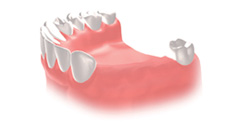
The simplest way to replace all missing teeth is with a denture. When this is a complete denture there can be difficulties with reduced function, and confidence. Dental implants provide an excellent solution, acting as an anchor for the denture resulting in greatly improved stability and reassurance for the wearer. A minimum of two implants are needed for a lower denture and a minimum of four for an upper denture.
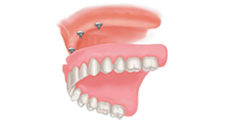
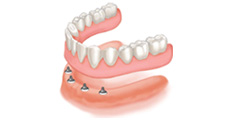
In the same way that single teeth can be replaced by an implant and a crown, the same is true for many or all the teeth in one jaw. These cases demand a very high level of planning and the number of implants required will vary depending on a which jaw is being treated and the individual case.
